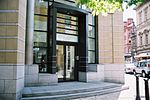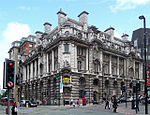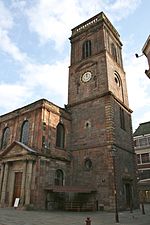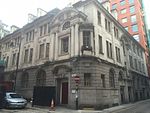Royal Exchange, Manchester
1921 establishments in EnglandBradshaw, Gass & Hope buildingsCommercial buildings completed in 1914EngvarB from April 2018Grade II listed buildings in Manchester ... and 3 more
Producing theatres in EnglandShopping centres in ManchesterTheatres in Manchester

The Royal Exchange is a grade II listed building in Manchester, England. It is located in the city centre on the land bounded by St Ann's Square, Exchange Street, Market Street, Cross Street and Old Bank Street. The complex includes the Royal Exchange Theatre and the Royal Exchange Shopping Centre. The Royal Exchange was heavily damaged in the Manchester Blitz and in the 1996 Manchester bombing. The current building is the last of several buildings on the site used for commodities exchange, primarily but not exclusively of cotton and textiles.
Excerpt from the Wikipedia article Royal Exchange, Manchester (License: CC BY-SA 3.0, Authors, Images).Royal Exchange, Manchester
Royal Exchange Arcade, Manchester City Centre
Geographical coordinates (GPS) Address Nearby Places Show on map
Geographical coordinates (GPS)
| Latitude | Longitude |
|---|---|
| N 53.4825 ° | E -2.2444 ° |
Address
Royal Exchange Arcade
Royal Exchange Arcade
M2 7EA Manchester, City Centre
England, United Kingdom
Open on Google Maps










